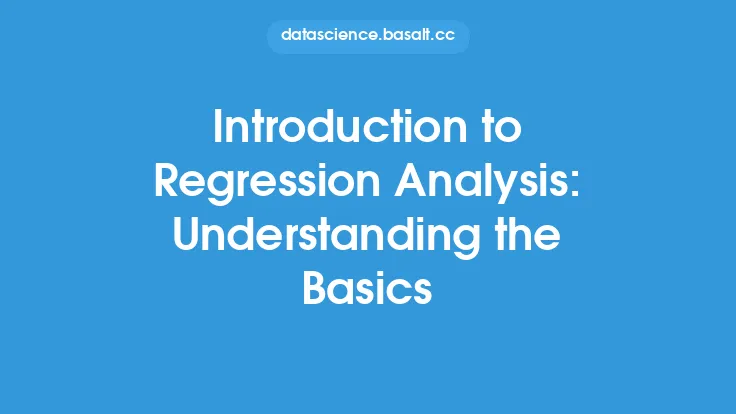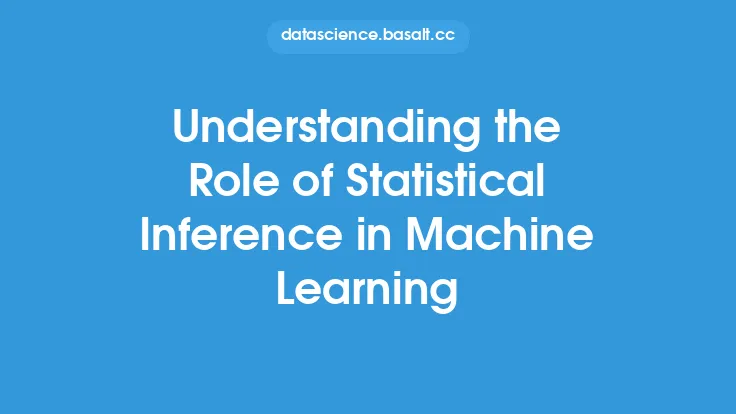Statistical inference is a fundamental concept in statistics that involves making conclusions or predictions about a population based on a sample of data. It is a crucial aspect of data analysis, as it allows researchers and analysts to draw meaningful insights from data and make informed decisions. At its core, statistical inference is about using probability theory and statistical methods to infer properties of a population from a sample of data.
What is Statistical Inference?
Statistical inference is a process that involves using statistical methods to make conclusions about a population based on a sample of data. It involves using probability theory and statistical techniques to estimate population parameters, test hypotheses, and make predictions about future outcomes. Statistical inference is based on the idea that a sample of data can be used to represent the characteristics of a larger population, and that by analyzing the sample, researchers can make inferences about the population as a whole.
Key Concepts in Statistical Inference
There are several key concepts that are essential to understanding statistical inference. These include:
- Population: The entire group of individuals or items that a researcher is interested in understanding or describing.
- Sample: A subset of individuals or items selected from the population, used to represent the characteristics of the population.
- Parameter: A numerical characteristic of the population, such as the mean or standard deviation.
- Statistic: A numerical characteristic of the sample, used to estimate the population parameter.
- Hypothesis testing: A procedure used to test a hypothesis about a population parameter, based on a sample of data.
- Confidence interval: A range of values within which a population parameter is likely to lie, based on a sample of data.
Types of Statistical Inference
There are two main types of statistical inference: estimation and hypothesis testing. Estimation involves using a sample of data to estimate a population parameter, such as the mean or standard deviation. Hypothesis testing involves using a sample of data to test a hypothesis about a population parameter, such as whether the mean of a population is equal to a certain value.
Estimation
Estimation involves using a sample of data to estimate a population parameter. There are two types of estimation: point estimation and interval estimation. Point estimation involves using a sample of data to estimate a single value for a population parameter, such as the mean. Interval estimation involves using a sample of data to estimate a range of values within which a population parameter is likely to lie, such as a confidence interval.
Hypothesis Testing
Hypothesis testing involves using a sample of data to test a hypothesis about a population parameter. There are several steps involved in hypothesis testing, including:
- Formulating a null and alternative hypothesis: The null hypothesis is a statement of no effect or no difference, while the alternative hypothesis is a statement of an effect or difference.
- Selecting a sample of data: A sample of data is selected from the population, and used to test the hypothesis.
- Calculating a test statistic: A test statistic is calculated, based on the sample data, to determine the likelihood of the null hypothesis being true.
- Determining the p-value: The p-value is the probability of obtaining a test statistic at least as extreme as the one observed, assuming that the null hypothesis is true.
- Interpreting the results: If the p-value is below a certain significance level (such as 0.05), the null hypothesis is rejected, and the alternative hypothesis is accepted.
Assumptions of Statistical Inference
There are several assumptions that underlie statistical inference, including:
- Random sampling: The sample of data is selected randomly from the population.
- Independence: The observations in the sample are independent of each other.
- Normality: The population distribution is normal, or approximately normal.
- Equal variances: The variances of the populations are equal.
Common Statistical Inference Techniques
There are several common statistical inference techniques, including:
- T-tests: Used to compare the means of two groups.
- Analysis of variance (ANOVA): Used to compare the means of multiple groups.
- Regression analysis: Used to model the relationship between a dependent variable and one or more independent variables.
- Non-parametric tests: Used to test hypotheses about population parameters, without assuming a specific distribution.
Limitations of Statistical Inference
There are several limitations of statistical inference, including:
- Sampling error: The sample of data may not be representative of the population.
- Non-response bias: Some individuals or items may not respond to the survey or study.
- Measurement error: The measurements or observations may be inaccurate or imprecise.
- Model misspecification: The statistical model used to analyze the data may be incorrect or incomplete.
Conclusion
Statistical inference is a powerful tool for making conclusions or predictions about a population based on a sample of data. It involves using probability theory and statistical methods to estimate population parameters, test hypotheses, and make predictions about future outcomes. By understanding the key concepts, types, and techniques of statistical inference, researchers and analysts can make informed decisions and draw meaningful insights from data. However, it is also important to be aware of the limitations and assumptions of statistical inference, in order to ensure that the results are accurate and reliable.





